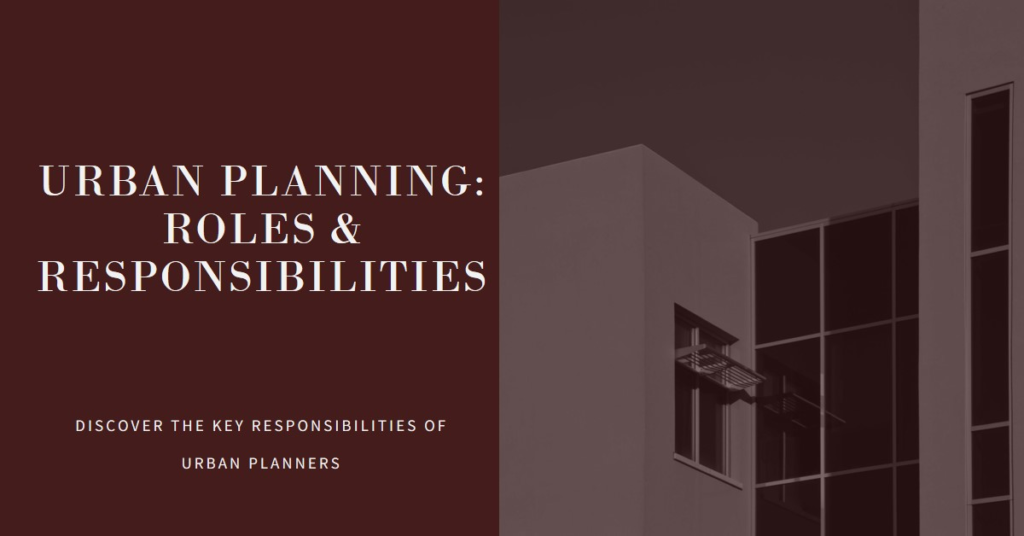
Table of Contents
- Introduction:
- Visionaries of Urban Landscapes:
- Balancing Growth and Sustainability:
- Architects of Public Spaces:
- Navigating Regulatory Frameworks:
- Enhancing Mobility and Connectivity:
- Community Engagement and Participation:
- Economic Development and Revitalization:
- Preserving Cultural Heritage:
- Adapting to Climate Change:
- Conclusion: The Pillars of Urban Development
Introduction:
Urban planners are pivotal figures in the development and transformation of cities and towns. Their work influences the living conditions, accessibility, and sustainability of urban spaces. But who exactly is an urban planner, and what roles and responsibilities do they undertake? This blog post delves into the multifaceted world of urban planning, highlighting the vital contributions of these professionals.
Visionaries of Urban Landscapes:
At the heart of urban planning lies the vision to create cohesive, functional, and aesthetically pleasing urban environments. Urban planners are visionaries who imagine the future of cities. They analyze current trends and project future needs to ensure that urban growth aligns with social, economic, and environmental objectives.
Urban planners work on various scales, from neighborhood plans to city-wide strategies. Their vision extends beyond immediate needs, considering long-term sustainability and resilience. This forward-thinking approach is crucial in addressing challenges such as population growth, climate change, and resource management.
Balancing Growth and Sustainability:
One of the primary responsibilities of urban planners is to balance urban growth with sustainability. This involves creating strategies that accommodate expanding populations while preserving natural resources and minimizing environmental impact. Planners must consider factors such as land use, transportation, housing, and green spaces to create harmonious urban settings.
In addition to environmental sustainability, urban planners also focus on social sustainability. They strive to design inclusive spaces that cater to diverse communities, ensuring that everyone has access to essential services and opportunities. This balance is critical for fostering vibrant, equitable, and resilient cities.
Architects of Public Spaces:
Urban planners play a significant role in the design and development of public spaces. They ensure that parks, plazas, and recreational areas are accessible, safe, and enjoyable for all residents. Public spaces are essential for community interaction, physical activity, and overall well-being.
Moreover, planners work to integrate public spaces into the urban fabric, connecting them with transportation networks and residential areas. This integration enhances the functionality and appeal of urban spaces, making cities more livable and attractive.
Navigating Regulatory Frameworks:
Navigating the complex web of regulations and policies is a core responsibility of urban planners. They must comply with zoning laws, building codes, and environmental regulations while advocating for innovative solutions. Planners often act as mediators between developers, government agencies, and the public to ensure that projects meet regulatory requirements and community needs.
Urban planners also contribute to the development of new regulations and policies. Their expertise and insights help shape frameworks that guide sustainable urban development, protect natural resources, and promote social equity.
Enhancing Mobility and Connectivity:
Efficient transportation systems are vital for the functionality of urban areas. Urban planners design and implement transportation plans that enhance mobility and connectivity. They focus on creating multimodal networks that include public transit, cycling paths, pedestrian routes, and roadways.
Planners work to reduce traffic congestion, improve safety, and promote sustainable transportation options. By prioritizing public transit and non-motorized transportation, they contribute to reducing greenhouse gas emissions and improving air quality.
Community Engagement and Participation:
Engaging with communities is a fundamental aspect of urban planning. Planners conduct public consultations, workshops, and surveys to gather input from residents and stakeholders. This participatory approach ensures that planning decisions reflect the needs and aspirations of the community.
Through community engagement, urban planners build trust and foster collaboration. They empower residents to take an active role in shaping their environments, leading to more inclusive and effective planning outcomes.


Economic Development and Revitalization:
Urban planners contribute to economic development by creating conditions that attract businesses, investments, and talent. They develop strategies to revitalize declining areas, support local economies, and promote job creation. By fostering economic growth, planners help improve the quality of life for urban residents.
Economic development planning involves analyzing market trends, identifying opportunities, and coordinating with various stakeholders. Planners work to create vibrant commercial districts, support small businesses, and ensure that economic benefits are distributed equitably across communities.
Preserving Cultural Heritage:
Preserving cultural heritage is another critical responsibility of urban planners. They identify and protect historic buildings, landmarks, and cultural sites that contribute to the city’s identity and character. Planners integrate heritage conservation into urban development plans, ensuring that growth does not come at the expense of cultural assets.
Incorporating cultural heritage into urban planning enhances the uniqueness and appeal of cities. It fosters a sense of pride and belonging among residents and attracts tourists and cultural enthusiasts, boosting local economies.
Adapting to Climate Change:
Urban planners are at the forefront of efforts to adapt to climate change. They develop strategies to mitigate the impacts of extreme weather events, sea-level rise, and other climate-related challenges. Planners design resilient infrastructure, promote green building practices, and enhance urban greenery to improve climate resilience.
Adaptation planning also involves assessing vulnerabilities and implementing measures to protect vulnerable populations. Urban planners work to create safe and sustainable environments that can withstand and recover from climate-related disruptions.
Conclusion: The Pillars of Urban Development
In conclusion, urban planners are the pillars of urban development, shaping the cities of tomorrow through their visionary thinking and strategic planning. Their roles and responsibilities encompass a wide range of activities, from designing public spaces to enhancing mobility, engaging communities, and promoting sustainability. By balancing growth with environmental and social considerations, urban planners create vibrant, resilient, and inclusive urban environments that improve the quality of life for all residents.



